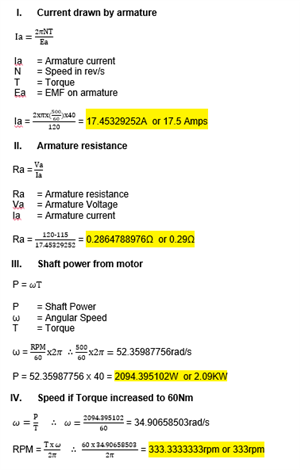I was wondering if some one could help me with my assignment.
Normally I wouldn't ask but I'm struggling to find a formula

I'm stuck on the 1st question, I have found two formulas I= Tω/V and Ea = 2πNT/Ia re aranged Ia = 2πNT/Ea
Both give different answers and don't take into account the back EMF.
Can any one give me some pointers please. I have looked through all my books but can't find any answers.
Any help would be appreciated.
Thank You
Daniel Robinson

